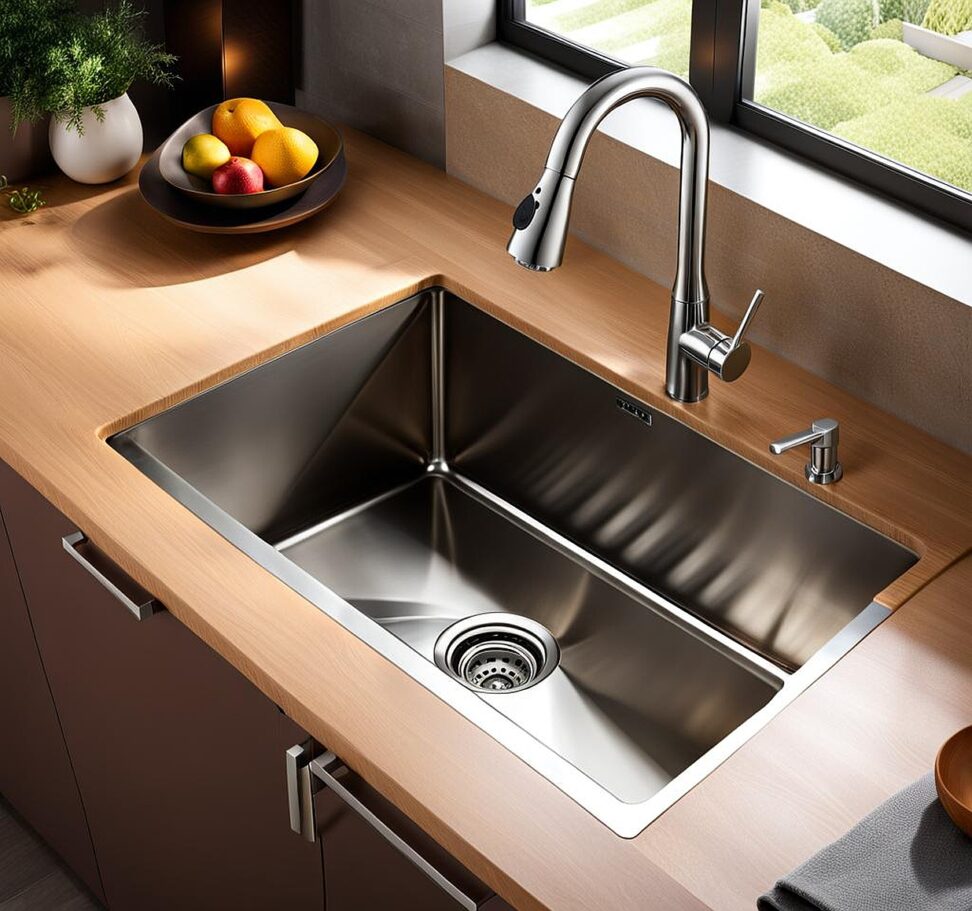Kitchen Sink Drainage Problems: Causes and Fixes
Have you ever encountered the frustrating issue of a clogged kitchen sink that simply refuses to drain? It’s a common household problem that can disrupt your daily routine and leave you wondering, “what causes kitchen sink to back up?” Don’t worry; we’re here to unravel the mysteries behind this annoying plumbing conundrum and provide you with practical solutions.
Common Causes of Kitchen Sink Backup
Understanding the root causes of a clogged kitchen sink is the first step towards finding an effective solution. Several factors can contribute to this problem, ranging from simple buildup to more severe underlying issues:
- Clogged drains: Food particles, hair, grease, and other debris can accumulate in the drain pipes over time, creating blockages that prevent water from flowing smoothly.
- Pipe obstructions: Foreign objects, such as utensils, toys, or even tree roots, can find their way into the pipes, causing obstructions that impede water flow.
- Improper plumbing installation or deterioration: Poorly installed or outdated plumbing systems can lead to misalignments, leaks, or other issues that contribute to clogs and backups.
- Main sewer line blockage or damage: If the main sewer line that carries waste from your home is blocked or damaged, it can cause backups in various fixtures, including the kitchen sink.
- Low water pressure or inadequate venting: Insufficient water pressure or improper venting in the plumbing system can create a vacuum effect, preventing proper drainage and leading to backups.
Identifying Signs of a Clogged Kitchen Sink
Before you can tackle the issue, it’s essential to recognize the telltale signs of a clogged kitchen sink. Here are some common indicators to watch out for:

- Slow draining water: If the water in your sink takes an unusually long time to drain, it could be a sign of a clog or blockage somewhere in the pipes.
- Gurgling noises from the drain: Strange gurgling or bubbling sounds coming from the drain can indicate that air is trapped in the pipes due to a blockage.
- Foul odors coming from the sink: Unpleasant smells emanating from the drain are often caused by trapped debris and stagnant water, which can breed bacteria and create unpleasant odors.
- Water backing up into the sink or other fixtures: If water starts backing up into the sink or other fixtures, such as the dishwasher or washing machine, it’s a clear sign of a severe clog or blockage in the main drain line.
- Multiple clogged drains in the home: If you’re experiencing drainage issues in multiple sinks or fixtures, it could indicate a larger problem with your main sewer line or plumbing system.
Preventive Measures to Avoid Kitchen Sink Clogs
While clogs are sometimes unavoidable, there are several preventive measures you can take to minimize the risk of kitchen sink backups:
- Use drain covers or strainers: Installing mesh drain covers or strainers can catch food particles, hair, and other debris before they enter the pipes, reducing the likelihood of clogs.
- Avoid pouring grease or oil down the drain: Grease and oil can solidify and accumulate in the pipes, creating stubborn blockages over time. Instead, dispose of these substances properly by allowing them to cool and solidify before throwing them in the trash.
- Regular cleaning with baking soda and vinegar solution: A simple mixture of baking soda and vinegar can help break down minor clogs and keep your drains fresh and clear. Pour the mixture down the drain, let it sit for a few minutes, and then flush with hot water.
- Schedule professional drain cleaning and inspection: Having a professional plumber inspect and clean your drains regularly can help identify and address potential issues before they become major problems.
- Install updated plumbing fixtures and pipes: If your home’s plumbing system is outdated or showing signs of wear and tear, consider upgrading to newer, more efficient fixtures and pipes to prevent future clogs and backups.
If you’re already dealing with a clogged kitchen sink, there are several DIY and professional solutions available to help you get your drains flowing freely again:
- Using a plunger or plumber’s snake: For minor clogs, a plunger or a plumber’s snake (also known as a drain auger) can be effective tools for dislodging the blockage and allowing water to drain properly.
- Clearing clogs with baking soda, vinegar, and hot water: The baking soda and vinegar solution mentioned earlier can also be used as a safe and eco-friendly clog-clearing method. Follow up with a generous flush of hot water to help clear the pipes.
- Hydro-jetting or snaking for tougher blockages: If the clog is more stubborn or located deeper in the pipes, a professional plumber may need to employ more powerful techniques such as hydro-jetting or snaking with specialized equipment.
- Pipe replacement or repair for severe damage: In cases of severe pipe damage or blockages that cannot be cleared, a plumber may recommend replacing or repairing sections of the pipe to restore proper drainage.
- Sewer line inspection and cleaning services: If the issue seems to be originating from the main sewer line, a professional sewer line inspection and cleaning service may be necessary to locate and clear the blockage.
By understanding the causes of kitchen sink backups, recognizing the warning signs, and taking preventive measures, you can save yourself from the hassle and potential water damage caused by clogs. And when a clog does occur, don’t hesitate to seek professional help if your DIY efforts fail to resolve the issue. With the right approach, you can keep your kitchen sink draining smoothly and maintain a functional, clog-free plumbing system.